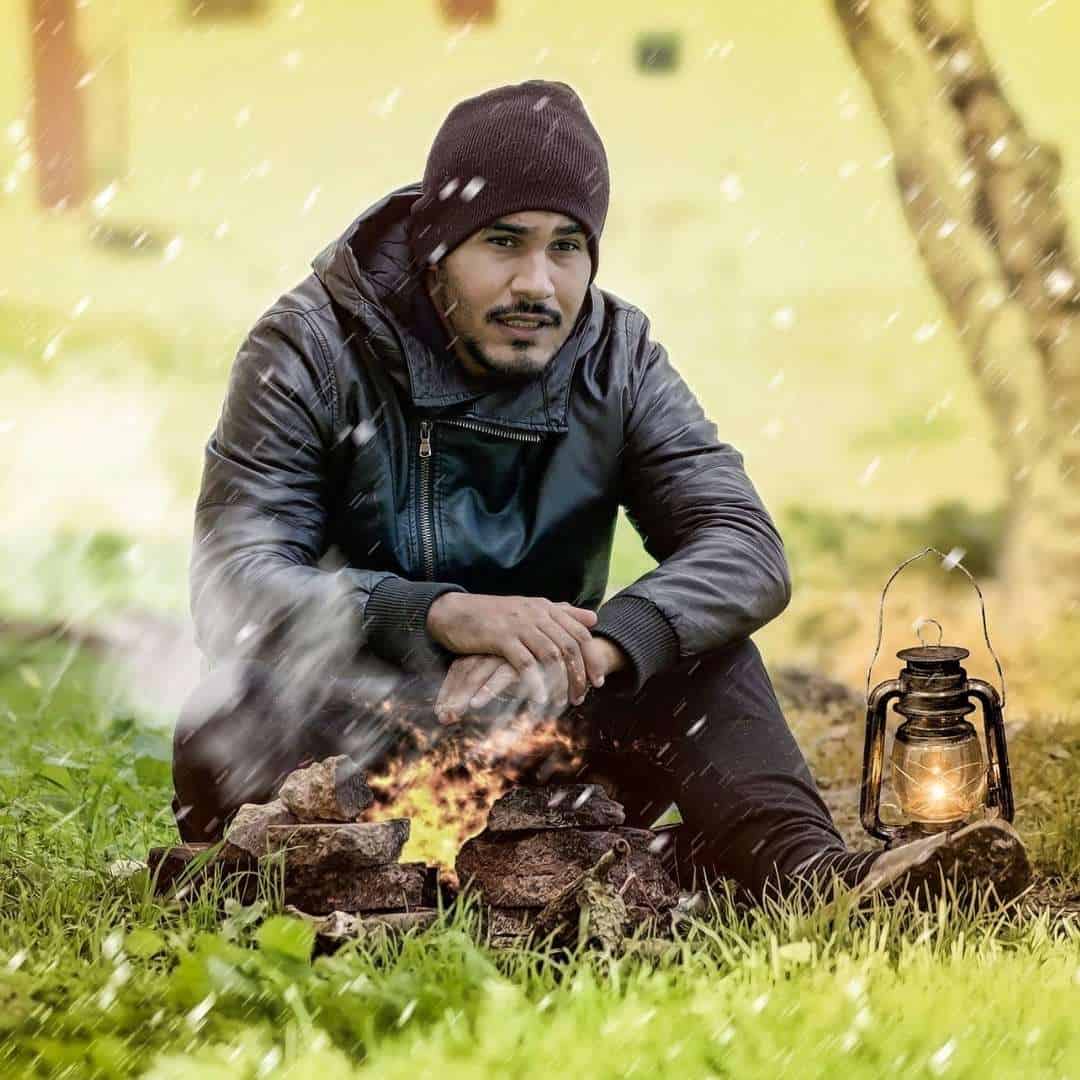Canada-wide flat shipping $9.99 | Free shipping for orders over $100
Canada is packed full of beautiful forests, rivers, and prairie lands. Trail riding is definitely one of the best ways to enjoy the incredible landscape. Unfortunately, though, our passion for riding comes with its own set of risks. Though statistics are hard to find, according to the Canadian Department of National Defence, the Canadian Armed Forces respond to roughly 1000 search and rescue cases annually. These numbers are primarily hikers, but it is interesting to note that most of these cases are single-day hikers. Single-day hikers are far more likely to venture out without adequate gear or training, and thus significantly raising the risk of injury if they get lost.
When you ride, are you only bringing the bare minimum to deal with the immediate climate and time of day? Or do you pack with risk in mind?
Risk is an unavoidable part of trail riding, but if we just focus on eliminating risk we would end up leaving our horses in the paddock since it is always safer to just watch them eat. But where is the fun in that? Instead of eliminating risk, we need to focus on managing it. To effectively manage risk we need to understand the 7 deadly enemies of survival for trail riders.
If you ever get lost or stuck in the wilderness, these are the 7 deadly enemies that you will need to anticipate and be ready for.
Pain is inevitable. The longer you are away from your typical comforts, the more pain will set in. Initially, it can motivate you but eventually, it will become detracting. Too much pain or lingering pain will sap away your morale and motivation to work. Once you stop actively working towards your survival, one of the other deadly enemies of survival will get you.
Pain can and must be managed. Obviously, if injured, your injury must be assessed and treated to the best of your ability, but even a persistent dull ache can kill you if it just makes you want to curl up into a ball to “wait it out.” Remember: if you are not actively working to save yourself, then you are dramatically increasing the chance that you will not survive. Brush up on your first aid and knowledge of local medicinal plants. Plants to help treat everything from infections to sore stomachs can be found all around you if you know what to look for.
If you find yourself and your horse in a survival situation and you are uninjured, then nothing will kill you faster than the cold. Even in the summer, as night sets in the temperature will likely drop. If it rains and you are without shelter, or even if you have shelter but sweat too much building it, your damp clothes will suck away your heat and allow hypothermia to set in.
To avoid hypothermia, make sure that you are dressed appropriately. Ride in layers that include a zip-up jacket that can be opened when you are hot to prevent sweating and closed for when you stop or need the extra warmth. Also, make sure your warmer clothing is made of wool and avoid cotton whenever possible. When wet, wool will remain warm, where cotton will lose its ability to retain heat.
Wool – Warm, Cotton – Cold.
Another way to stay warm is to build a fire and to keep moving and working. If you can build a fire, my favourite survival “luxury” is to add a few large rocks near the fire to heat them up. Make a thick bed of spongy moss and stick the hot rocks underneath for a warm comfy DIY mattress.

Thirst can kill you just as much as any of the other enemies but what is worse is that thirst is often forgotten until serious symptoms start to be recognized. Furthermore, thirst will dull your mind, and allow fear to sink in making finding improvised water sources even harder to find and gather.
We are used to the initial feeling of being cold and we have all experienced some degree of pain, but few of us have suffered from dehydration and even fewer know what to do about it when there isn’t a faucet nearby.
If you woke up in a survival situation suffering from dehydration but found a field covered with morning dew, how would you collect it? Leave your thoughts in the comments section below – I’ll let you know if you are right!
| Early Symptoms | Advanced Symptoms |
| Thirst | Not urinating or having very dark yellow urine |
| Dry or sticky mouth | Very dry skin |
| Not urinating very much | Feeling dizzy |
| Dark yellow urine | Rapid heart rate |
| Dry, cool skin | Rapid breathing |
| Headache | Sunken eyes |
| Muscle cramps | Sleepiness, lack of energy, confusion or irritability |
| Fainting |

Starvation is by the far the most obvious enemy on our survival list, but it is rarely the one that will prove to be fatal. Hunger will instead drop our morale and make it harder to think logically. As our bodies start lacking nourishment, we become more susceptible to the negative effects of cold, pain, and fear.
Rationing any available food is the key to avoiding starvation, but when there is no food available knowing how to build and place snares, fish, and find edible plants will help keep you busy and fed.
Actively hunting fish and rabbits in the wilderness is tough work and rarely worth the effort. I would sooner spend my time building a ten-foot-tall signal bonfire than try stabbing at fish with a pointy stick. However, if you are riding far enough away from civilization to worry about starvation, then a few of these tiny essential tools are perfect for building snares and catching fish.
Having these items in your saddlebag will help keep your stomach full, but will not guarantee success. I have caught my own boot in a snare while walking to the latrine during the night more often than I have caught a rabbit.
Fatigue is one of the more surprising deadly enemies of survival for trail riders. It strips away our resolve and makes us complacent during a time that we need our wits. Additionally, even a moderate amount of fatigue will reduce our mental abilities and decrease our sense of urgency.
Physical exertion will weaken our bodies, and lacking the required nutrients and adequate rest to recover. It will further increase the likelihood of becoming ill. When you must exert yourself, keep your efforts brief and no greater than 40% of your maximum effort. If hypothermia is an additional risk, keep this effort even lower since physical exertion will cause you to become dehydrated through sweating and wet your clothing allowing your body heat to escape.
Mental fatigue is no better, and harder still to avoid. It will dull your wits and allow carelessness to creep in. Your mindset will start to suffer almost immediately as the inevitable stress and fear start to rise and will worsen as time passes. Hopelessness, losing sight of goals, frustration, discomfort, and boredom are all going to adversely affect you. The best way to fight this is to set small attainable goals and stay busy.
Pro Tip: stick a pack of plastic playing cards in your survival kit. It will help with the next enemy as well.
Boredom and loneliness are the last two enemies on our list and can be the most insidious, mainly because to the uninitiated, they are the least expected. I will group them together just to avoid repeating myself since they are so similar.
These feelings will grow whenever nothing is happening, when something is expected to happen but doesn’t, or if you must stay still, quiet, or alone such as when injured.
Boredom will cause you to make poor or dangerous decisions just to break the monotony. I have personally found myself climbing a tree just to take a look around. Unless there is a chance of a highway nearby, the physical effort of climbing and the possibility of falling far outweighs the benefit of climbing a tree and verifying that yup, there are a lot of trees in this forest. In retrospect, I could have told you that nugget of information from the ground.
Loneliness will play into boredom and exaggerate the difficult situation even further.

Risk is all around us, and the further we travel from civilization, the fewer our options become if the risk turns into danger. The best way to mitigate that risk is to understand it, anticipate it, and arm ourselves with knowledge and a few basic tools. All 7 enemies of survival for trail riders can be either minimized or avoided altogether if they are understood and foreseen. Packing a few simple tools in your saddlebag, or on you, such as a knife will also make the difference. For help finding a knife that specifically meets the needs of trail riders see this post where I go over all the details and options.
